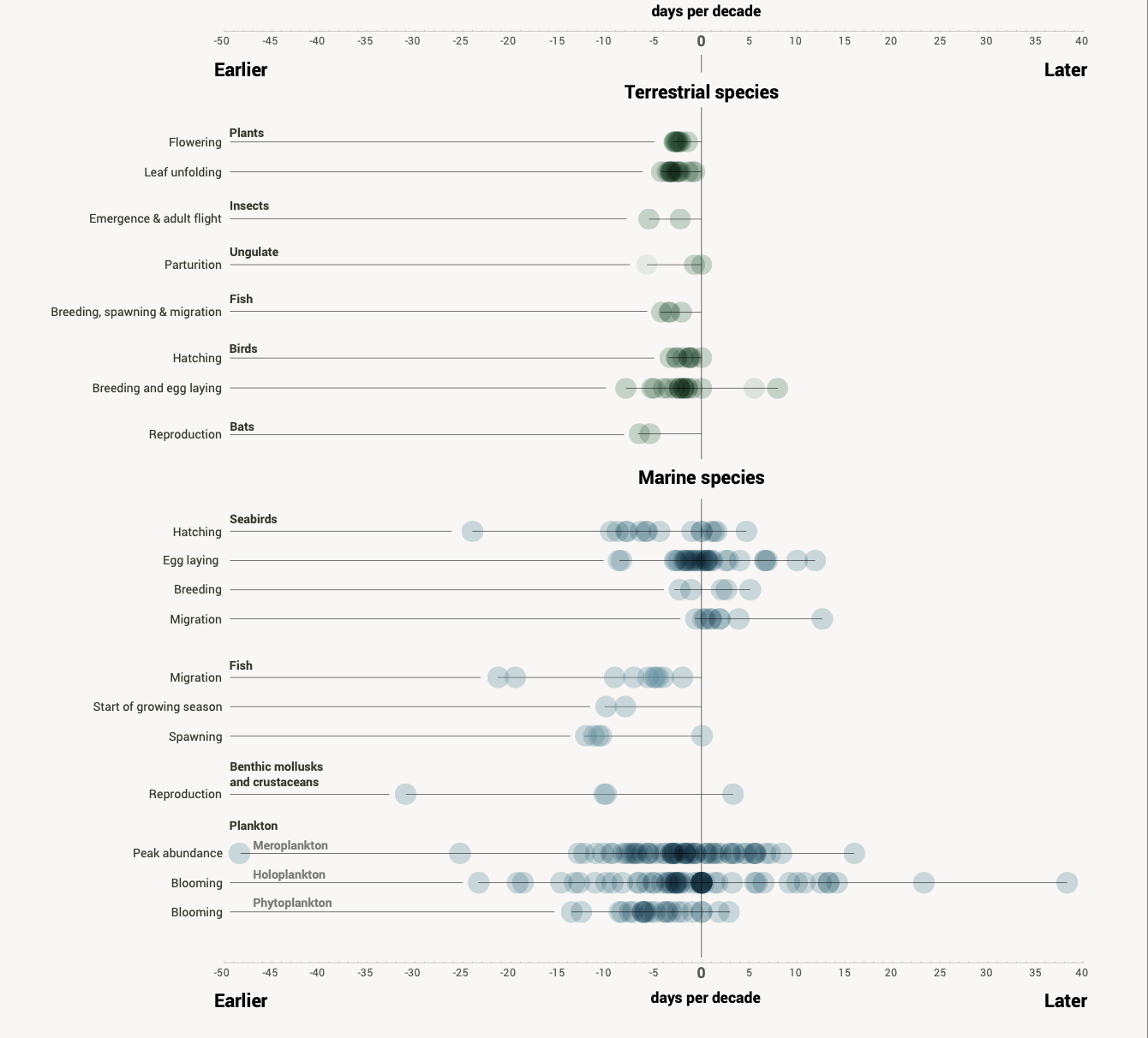White storks migrating to Northern Europe nest up to a week earlier in warm weather, exposing them to extreme storms and threatening the survival of their chicks. Staple crops like barley, maize, rice, rye, sorghum, soybean, and wheat, along with fruits like apples, cherries, pears, and mangoes, are all experiencing disruptions in their growth and development. Ten years ago, a marine heat wave in the Gulf of Maine sped up the life cycle of lobsters, overwhelming local fisheries that had to harvest them earlier than expected.
Scientists have warned for years that climate change is upending the natural life cycles of plants and animals — to potentially devastating effect. Now, a new report released Thursday by the United Nations identifies these changes as one of the world’s most pressing emerging environmental crises, in need of immediate action.
The report, Frontiers 2022, comes ahead of the UN Environment Assembly meeting in Nairobi, Kenya, at the end of February. It also highlights as emerging crises the growing destruction from wildfires and the hidden cost of noise pollution, which leads to 12,000 premature deaths each year in the European Union alone. But perhaps most strikingly, it warns that life-cycle changes driven by warming temperatures and extreme weather patterns are affecting the natural rhythms of species around the world, often too quickly for them to adapt. And while these changes may seem subtle season to season, the report argues, they have the potential to devastate commercial agriculture and fisheries, while also threatening vulnerable species, from butterflies to whales.
“Our Frontiers Report series aims to put the spotlight on key and emerging environmental issues — those that potentially have huge effects on our society, economy, and ecosystems,” said Andrea Hinwood, chief scientist for the UN Environment Programme, during a press event. “We need to be aware of the issues, their causes, so we can look at how we manage them, prevent harm, and implement appropriate preventative actions and solutions.”
The science of how living things time their birth, growth, reproduction and other life-cycle stages is known as phenology, and changes in these patterns — driven by environmental forces like temperature, the arrival of rains and other cues — are called “phenological shifts.” Particularly in temperate regions of the world, where changing seasons let animals know to hibernate, flowers to bloom, birds to lay their eggs, and fish to spawn, warming temperatures and extreme weather driven by climate change can alter these natural cycles.
The world has already warmed 2.14 degrees Fahrenheit (or 1.19 degrees Celsius) from the pre-industrial era. Studies in the early 2000s found that “the life stages of 203 plant and animal species had advanced by an average of about 2.8 days earlier per decade,” according to the report. Since then, more recent research has continued to study how ecosystems, biomes, and taxonomic groups are being affected as the rise in temperatures speeds up.

Monarch butterflies have delayed their annual migration by 6 days per decade due to warmer-than-normal temperatures, potentially impacting their access to food sources along the way. In the Arctic, spring vegetation is sprouting up to 2 weeks earlier than normal, meaning caribou calves are born too late to eat it, decimating populations of the endangered species. Certain fish species have shifted their egg laying forward by as many as 10 days per decade, and some plankton species are reaching peak abundance as many as 50 days earlier per decade.
Animals often can adapt, the report explains, with chicks hatching earlier to catch up with their main food source: caterpillars, themselves emerging earlier to keep up with the plants they feed on — a phenomenon known as “phenological plasticity.” But with climate change occurring so rapidly, “individual or population plasticity may not be able to keep up with the rapid environmental changes we are experiencing,” the report says.
These changes aren’t just about the natural world. As the report warns, phenological mismatches could wreak havoc on human societies if left unchecked. Along with a loss in overall biodiversity — which has consequences for human health and the spread of infectious diseases — warming trends have already affected crop yields, threatening food security around the world. When plants flower early because warming temperatures signal to them that spring has arrived, pollinators might not be active in time to reach them, or late-season frosts could destroy the early crop. Warmer temperatures could also encourage the development of pests, threatening yields.
“Rehabilitating habitats, building wildlife corridors to enhance habitat connectivity, shifting boundaries of protected areas, and conserving biodiversity in productive landscapes can help as immediate interventions,” the report concludes. “However, without strong efforts to reduce greenhouse gas emissions, these conservation measures will only delay the collapse of essential ecosystem services.”



